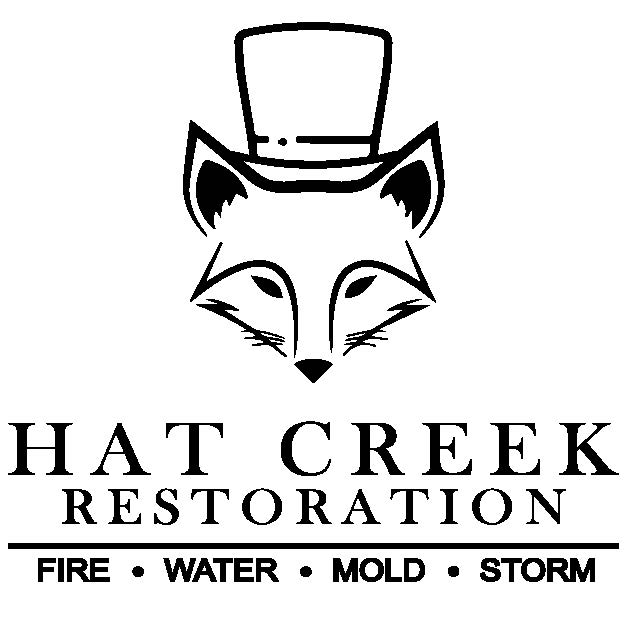Mold growth poses a significant threat to both your property and health, with the potential to cause respiratory issues and structural damage if left unaddressed. Mold is a naturally occurring fungus that thrives in damp environments, making it vital to identify and manage moisture sources in your home to prevent infestations. This article will cover key aspects of mold remediation, including understanding the prime conditions for mold development, the impact of mold on health and property, various remediation techniques, and how Hat Creek Restoration can offer exceptional solutions to safeguard your home and family against mold-related issues.
Mold remediation is the process of removing, cleaning, sanitizing, and treating surfaces and materials affected by mold. This critical procedure requires a thorough understanding of various mold species, potential health hazards, and diverse removal techniques. By becoming well-acquainted with the intricacies of mold remediation, you strengthen your defenses against costly repairs, health concerns, and unwarranted stress caused by unchecked mold growth.
In addition to sharing valuable insights on mold remediation, we will also showcase how Hat Creek Restoration excels in providing comprehensive, expert services to tackle mold-related challenges. Armed with knowledge, professional support, and our call-to-action (CTA) at the end of the article, you can effectively manage mold in your home and ensure a healthy, thriving living environment.
Recognizing the Prime Conditions for Mold Growth
To effectively combat mold infestations, it is crucial to understand the ideal conditions that foster their growth. Mold thrives in environments with the following characteristics:
1. Moisture: Excess humidity, leaks, or water damage provides the perfect breeding ground for mold spores to reproduce.
2. Limited Ventilation: Poorly ventilated areas with stagnant airflow can trap moisture, creating suitable conditions for mold growth.
3. Organic Material: Mold feasts on cellulose-based materials such as wood, drywall, and certain textiles.
4. Darkness: Mold prefers dark environments that lack ultraviolet light, which typically inhibits its growth.
Identifying these conditions in your home allows you to take preventative measures and mitigate the risk of mold infestations.
Understanding the Impact of Mold on Health and Property
Mold carries implications for both your health and the structural integrity of your property, making it essential to address infestations promptly:
1. Health Risks: Mold exposure can cause respiratory issues, allergies, and other health concerns, especially for individuals with asthma, compromised immune systems, or sensitivity to mold.
2. Property Damage: Prolonged mold growth can weaken the structure of your home, such as wood beams or drywall, necessitating costly repairs.
3. Odor and Discoloration: Mold can leave behind an unpleasant musty odor and cause unsightly discoloration, impacting your overall quality of life and property value.
Timely mold remediation is crucial to protect both your home and your family’s well-being.
Exploring Mold Remediation Techniques
Remediation professionals employ a variety of methods to address mold growth effectively. These techniques may include:
1. Containment: Establishing barriers to prevent the spread of mold spores to unaffected areas during remediation.
2. Air Filtration: Utilizing high-efficiency particulate air (HEPA) filtered vacuums and air scrubbers to trap and remove airborne mold spores.
3. Removal of Infested Materials: Properly dispose of contaminated, non-salvageable materials, such as drywall, carpeting, and insulation.
4. Cleaning and Disinfecting: Thoroughly cleaning and treating affected surfaces with EPA-registered biocides to eliminate the mold and inhibit future growth.
5. Drying and Dehumidification: Reducing moisture levels and returning the environment to normal humidity levels using specialized drying equipment and dehumidifiers.
Understanding these remediation techniques can support informed decision-making and optimal outcomes during the restoration process.
Hat Creek Restoration: Mold Remediation Expertise at Your Service
When confronted with mold contamination in your home, Hat Creek Restoration provides comprehensive, professional solutions. Our mold remediation services include:
1. Inspection and Assessment: Our trained consultants identify the extent of the mold contamination and devise a tailored remediation plan.
2. Containment and Air Filtration: Mobile containment units and advanced HEPA filtration equipment prevent the spread of mold spores during remediation.
3. Effective Mold Removal: Our team meticulously removes mold from contaminated surfaces and properly disposes of infested materials.
4. Restoration and Reconstruction: We offer repairs to damaged structures and reconstruction services, returning your home to its pre-mold condition.
5. Ongoing Support and Communication: Hat Creek Restoration maintains open communication throughout the process, ensuring you understand each step and feel at ease knowing your home is in good hands.
Conclusion
Mold infestations pose a formidable threat to both your health and property, making it essential to become well-versed in mold remediation and its implications. Understanding the ideal conditions for mold growth, the impact on health and property, various remediation techniques, and partnering with a trusted service provider like Hat Creek Restoration equips you with the tools to effectively manage mold in your home and safeguard the well-being of you and your family.
If you’re looking for a solution to mold issues, don’t hesitate to reach out to Hat Creek Restoration. Our mold remediation contractors provide comprehensive services that address and prevent mold problems, ensuring your home is a safe and comfortable place to live. Contact us today for expert support and peace of mind.
